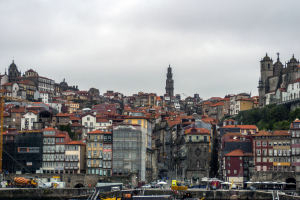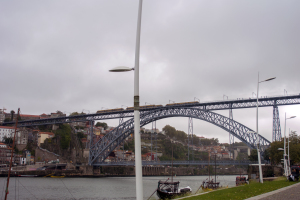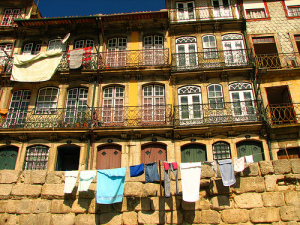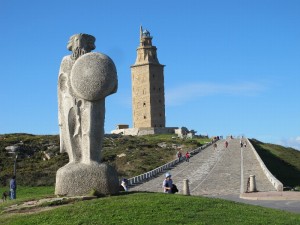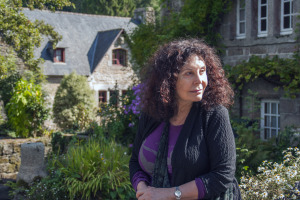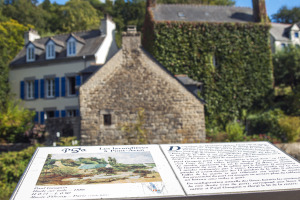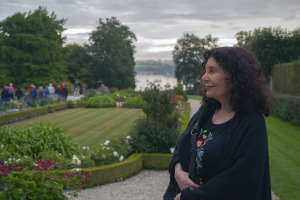Oporto, also known as ‘Porto’, is the second largest city in Portugal (next to its sister city, Lisbon). Once an important outpost of the Roman Empire, Oporto is now one of the oldest cities in Europe, dating back to 275 BC. The Douro River, which was a Roman trading center, is now hallmarked by an extraordinary double-decker bridge, the work of the famous Parisian engineer, Gustav Eiffel (of the Eiffel Tower, Paris).
Porto is registered as a World Heritage Site by UNESCO. One of the reasons for its fame is its unique, classical gilt-work architecture, reflecting the baroque-style and romanticism of the 19th and 20th century. I remember thinking the lacey balconies gracing many of the buildings, somehow reminded me of New Orleans.
Porto’s most internationally famous export is port wine, which is named for the city. The Portuguese take their wine so seriously, that the guidelines dictated by the ‘European Union of Protected Designation of Origin’ state that only port from Portugal may be labeled as Port Wine. I’ve personally never been a fan of port because of its overwhelming sweetness, but after visiting the Sandeman Winery and tasting a glass, I could possibly do a commercial! The port was memorable… smokey and sweet, delicate and bitter – all at the same time.









